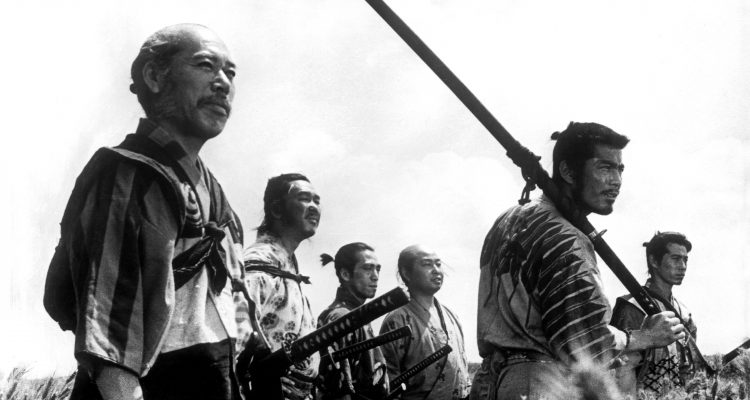 Picking your favorite Akira Kurosawa film is a tricky choice for any movie fan. From “Rashomon” to “Ran,” the great Japanese filmmaker, one of the most beloved and influential directors of all time, knocked out a string of classics in a career that lasted well over 40 years. But more often than not, at the top of the list for Kurosawa fans is “Seven Samurai,” the 1954 samurai epic that redefined the action movie for generations.
Picking your favorite Akira Kurosawa film is a tricky choice for any movie fan. From “Rashomon” to “Ran,” the great Japanese filmmaker, one of the most beloved and influential directors of all time, knocked out a string of classics in a career that lasted well over 40 years. But more often than not, at the top of the list for Kurosawa fans is “Seven Samurai,” the 1954 samurai epic that redefined the action movie for generations.
Following six samurai (and one pretender, iconically played by Toshiro Mifune) who are recruited by a village of farmers to protect them from bandits, it remains to this day one of the most stirring, thrilling adventures in cinema history, and landed Kurosawa firmly on the map in international cinema. The film was released in Japan 58 years ago today, on April 26th, 1954 (a U.S. release, heavily cut down, would follow 30 months later), and to mark the occasion, we’ve collected five little-known facts about the movie, which you can find below.
1. Originally, the film was going to be called “Six Samurai”
Although it’s now the genre with which he’s most associated, Kurosawa had never made a samurai movie before this point. His original conception for the project was to follow the day in the life of a samurai, ending with the protagonist’s suicide, but he wasn’t confident enough in the level of research he’d need to do. Instead, he decided to adapt a story he’d found about a group of Samurai defending a village of farmers. The 500-page first draft (co-written with regular collaborators Hideo Oguni and Shinobu Hashimoto) was titled “Six Samurai,” but on reflection, they found that having six responsible, sober samurai heroes was a little dry. As a result, they created the pretender samurai Kikuchiyo, who’s more empathetic and emotional, and cast Toshiro Mifune, who was originally going to play badass swordsman Kyuzo (later taken by Seiji Miyaguchi), in the new role, giving the actor free rein to improvise.
2. Like the characters, the cast came from a diverse range of sources.
Some of the cast, particularly the leads, were no-brainers. Takashi Shimura, who plays leader Kambei Shimada, was a long-time favorite of Kurosawa‘s and had starred in “Ikiru” two years earlier for the director. Mifune, too, was a staple, having been discovered by the director after throwing a fit after getting in the wrong queue for a job at Toho Studios, and had starred in six prior films for the director, including “Rashomon.” Some of the actors had curious backstories, however. Isao Kimura (the youngest Samurai, Katsushiro) ran left-wing theater groups. Keiko Tsushima, who plays his love interest Shino, was a former dancer, who’d starred in Ozu’s “The Flavor Of Green Tea Over Rice.” Yoshio Tsuchiya (villager Rikichi) was a former doctor and would go on to write a number of books about UFOs. Some had even had or would have brushes with Hollywood: Kamatari Fujiwara, who played Shino’s father Manzo, would crop up in Arthur Penn‘s “Mickey One” with Warren Beatty, and Sojin Kamiyama, who plays the blind minstrel, had been a silent film star in Hollywood in the 1920s, one of the few Asian actors to play Charlie Chan, and appearing in “The Thief Of Baghdad” and “The King of Kings” among others before the end of the silent era saw him forced to return to Japan. Keep an eye out for a walk-on appearance from Tatsuya Nakadai, then only 21 and making only his second film. He’d later return with a major role in “Yojimbo,” and after Kurosawa and Mifune fell out in the 1960s after the flop “Red Beard,” Nakadai would go on to become the director’s go-to leading man, starring in “Kagemusha” and “Ran,” among others.

